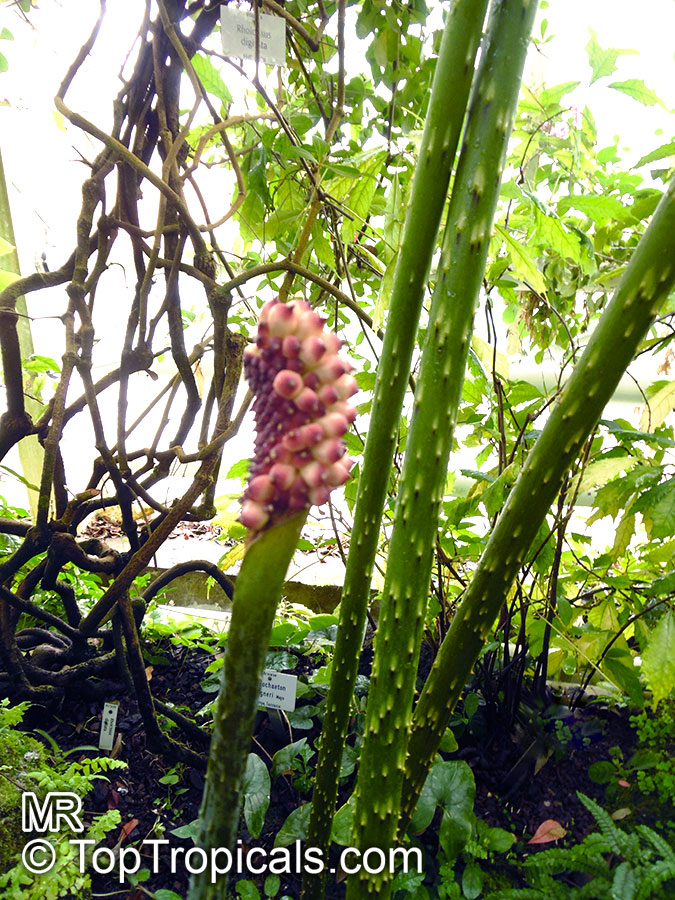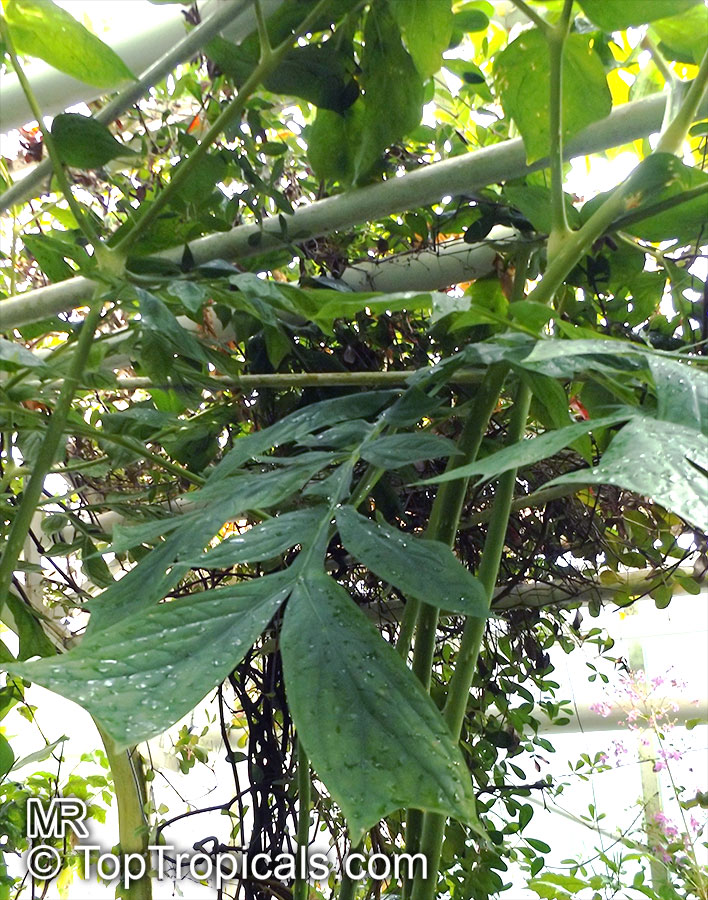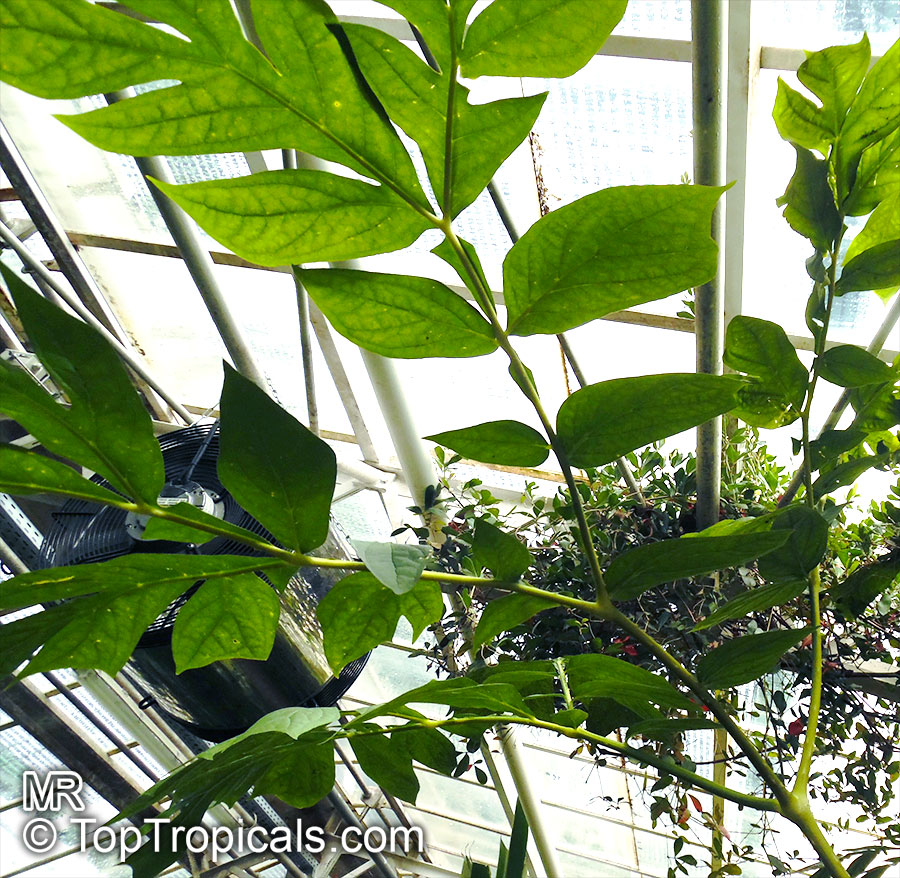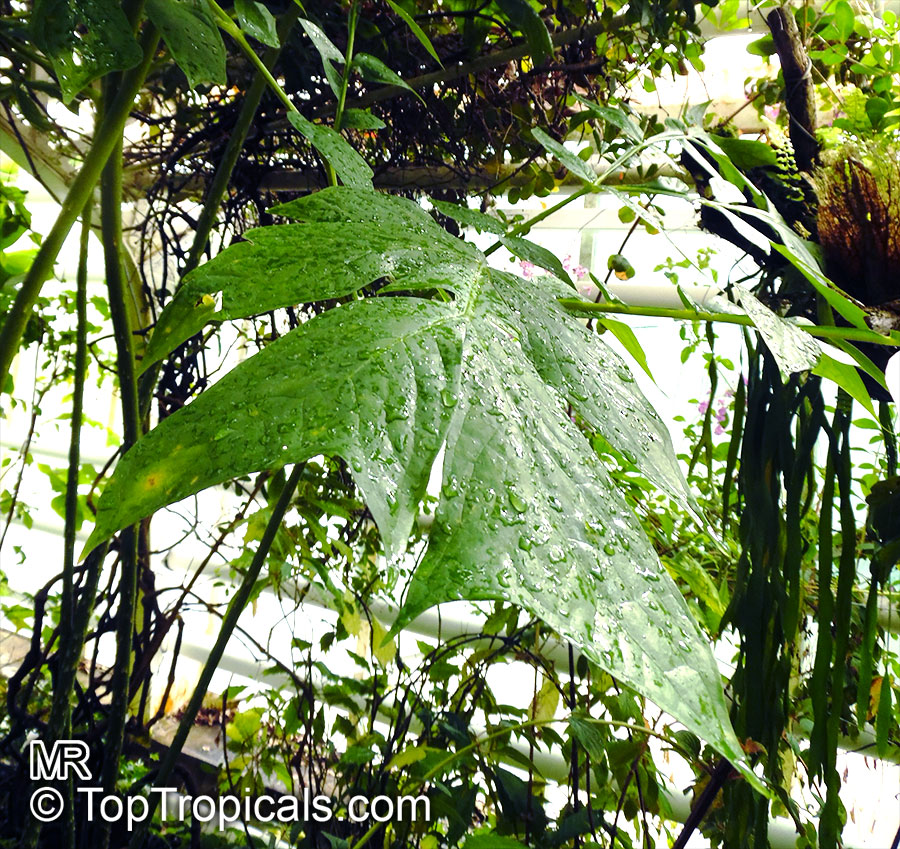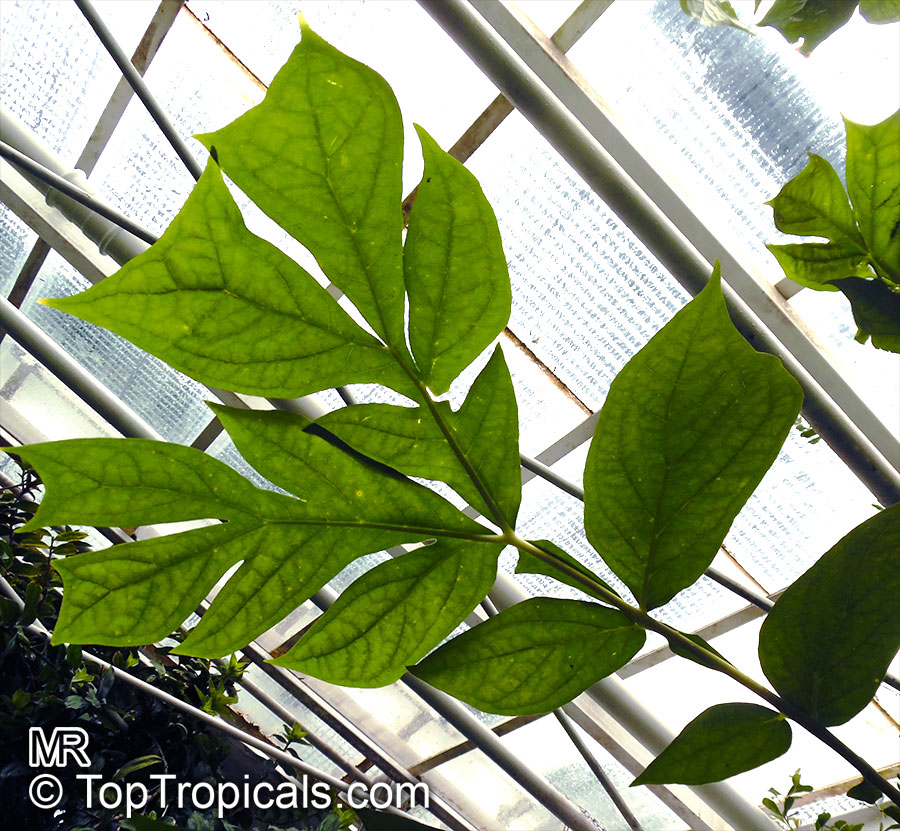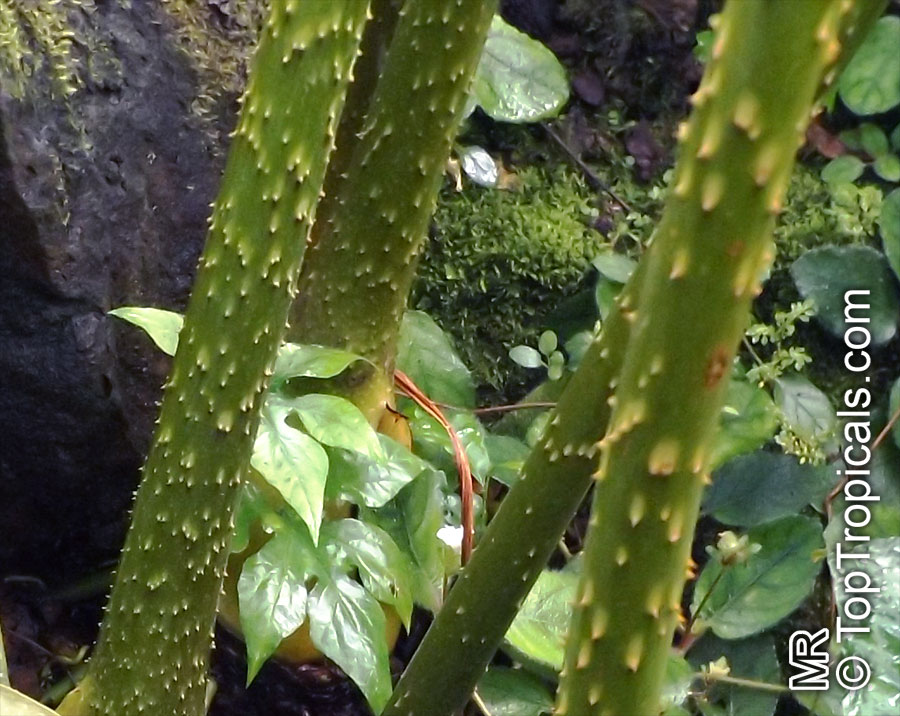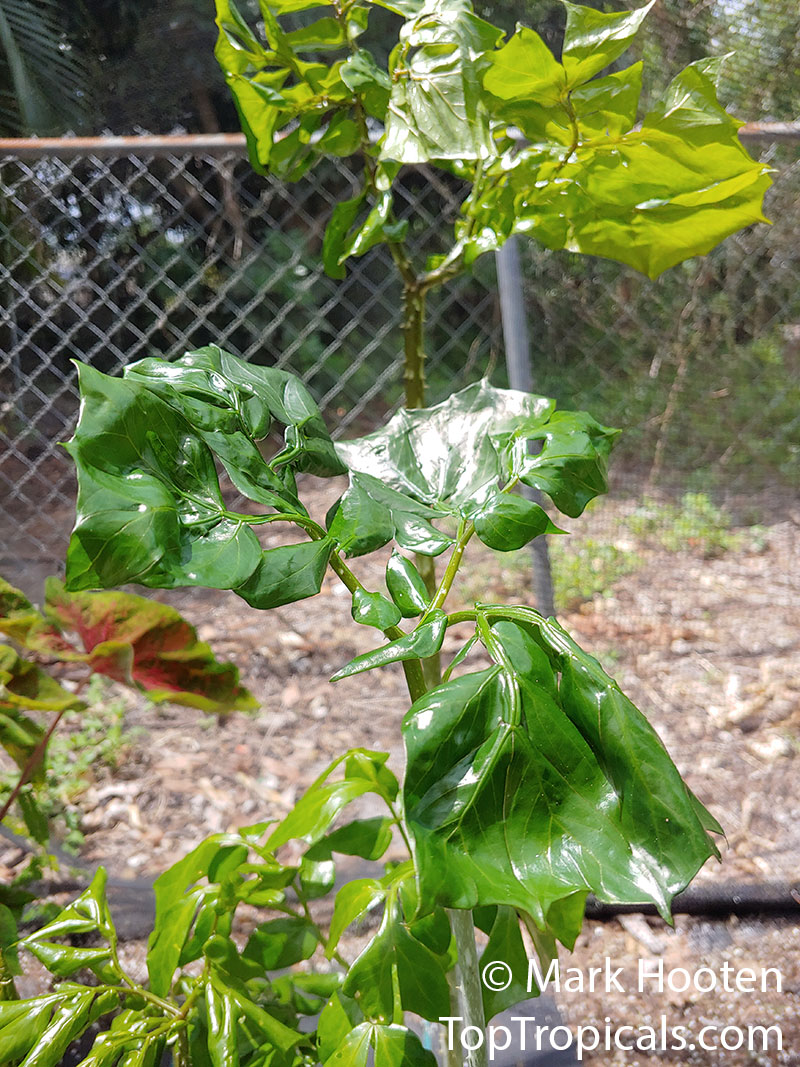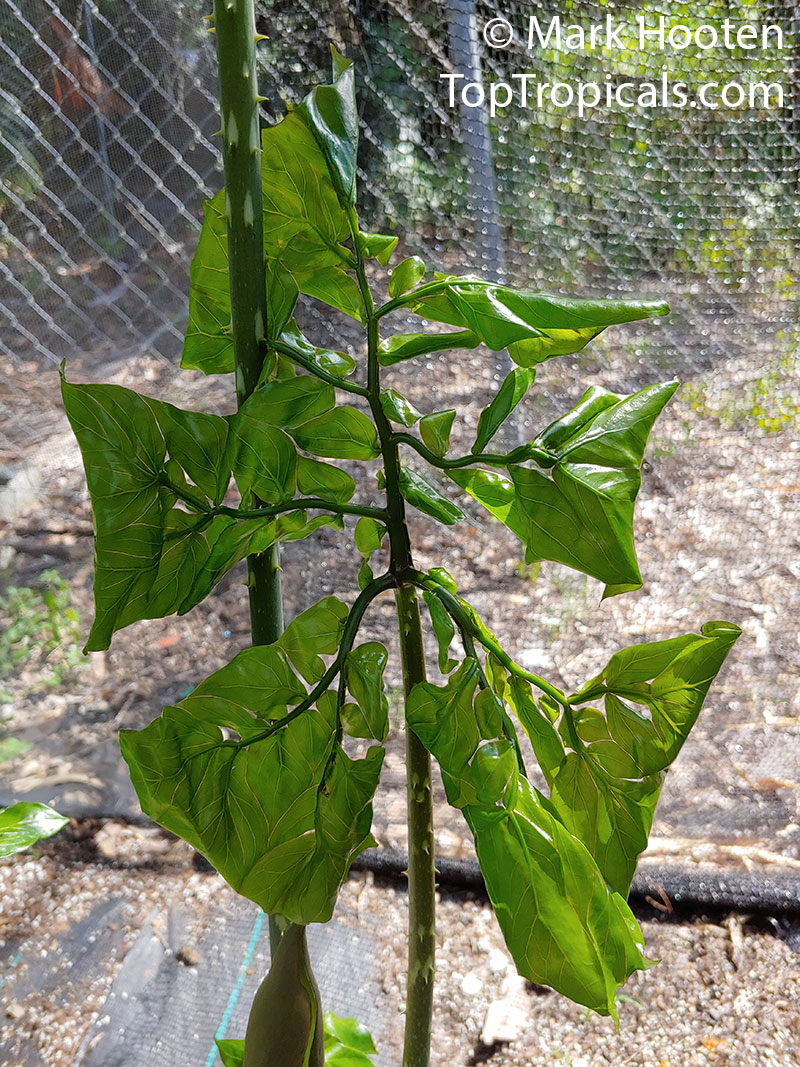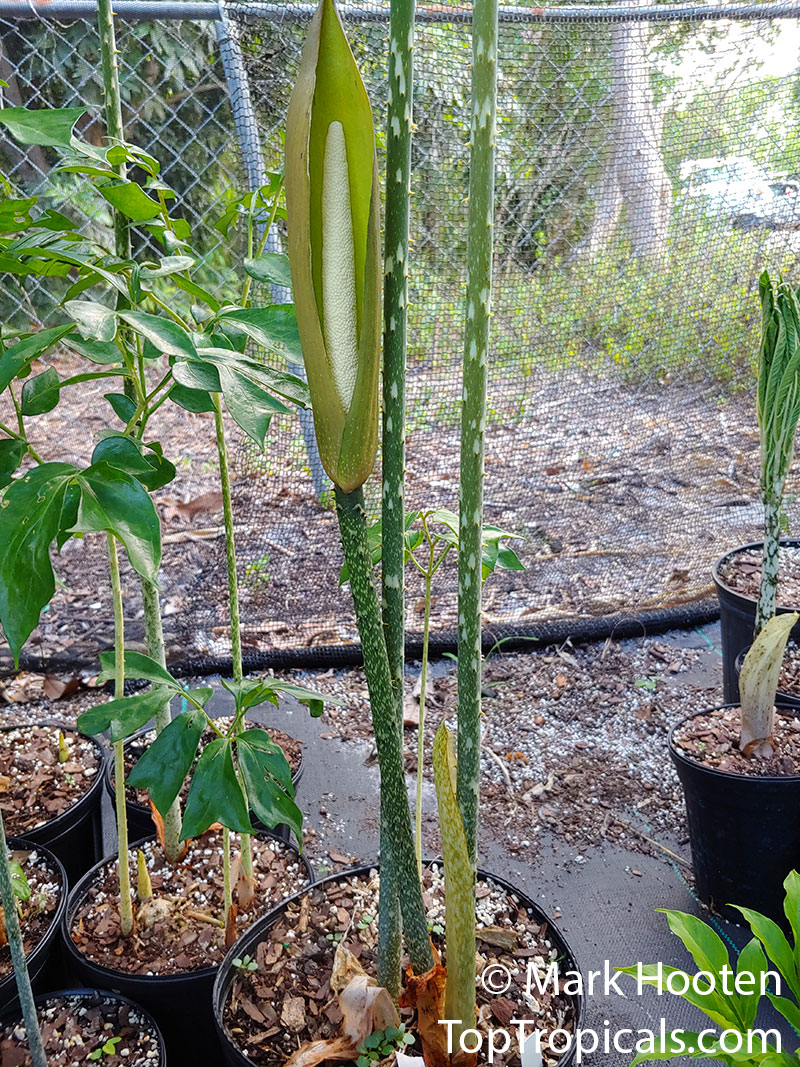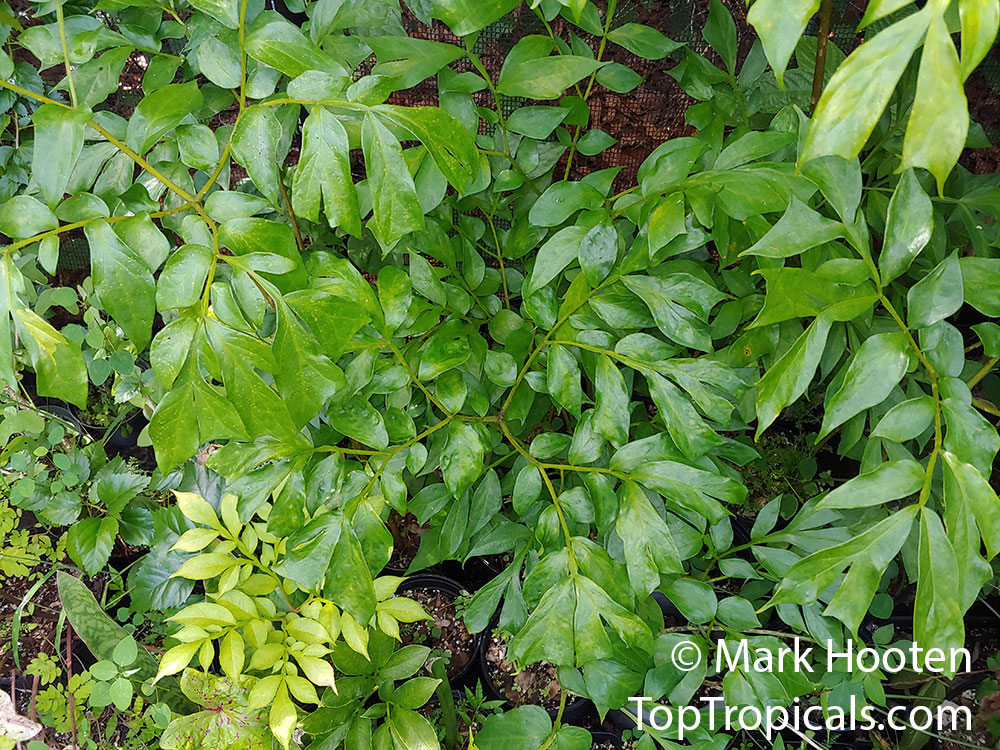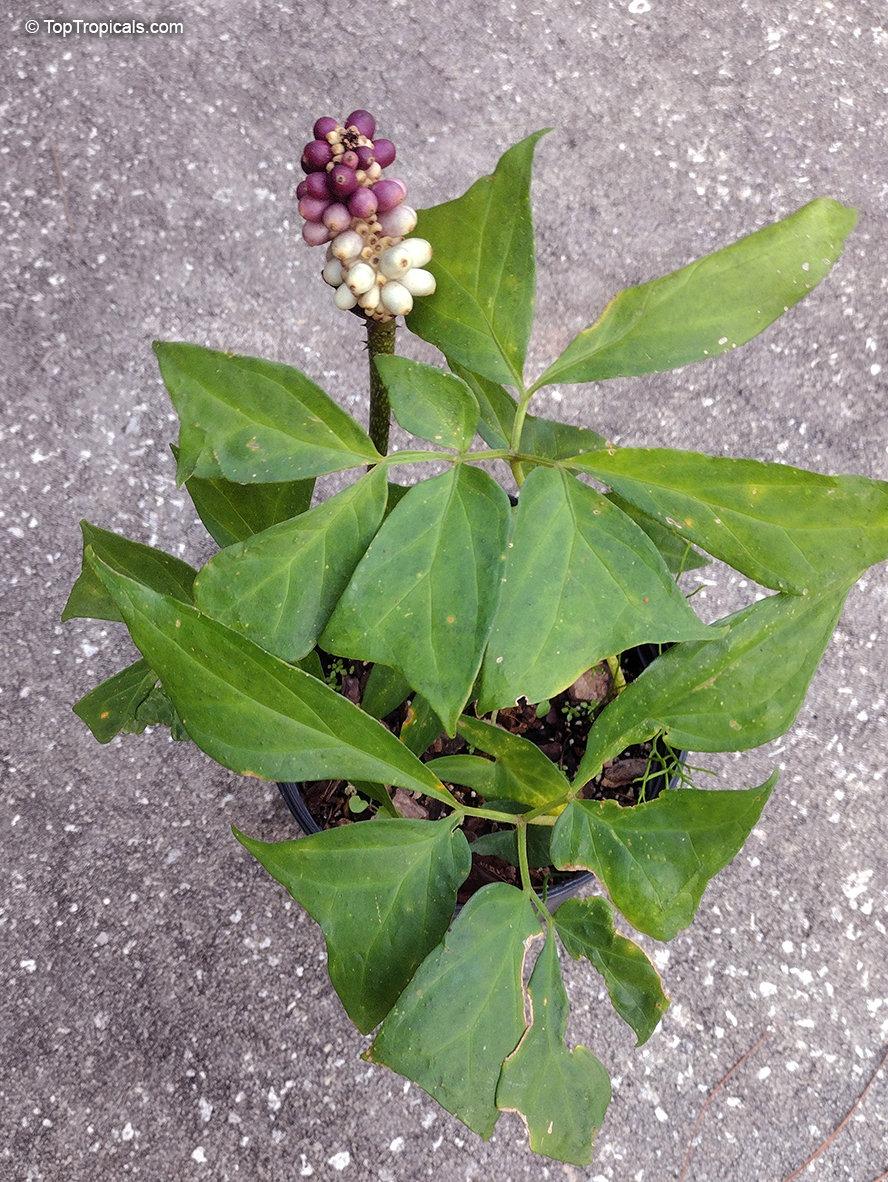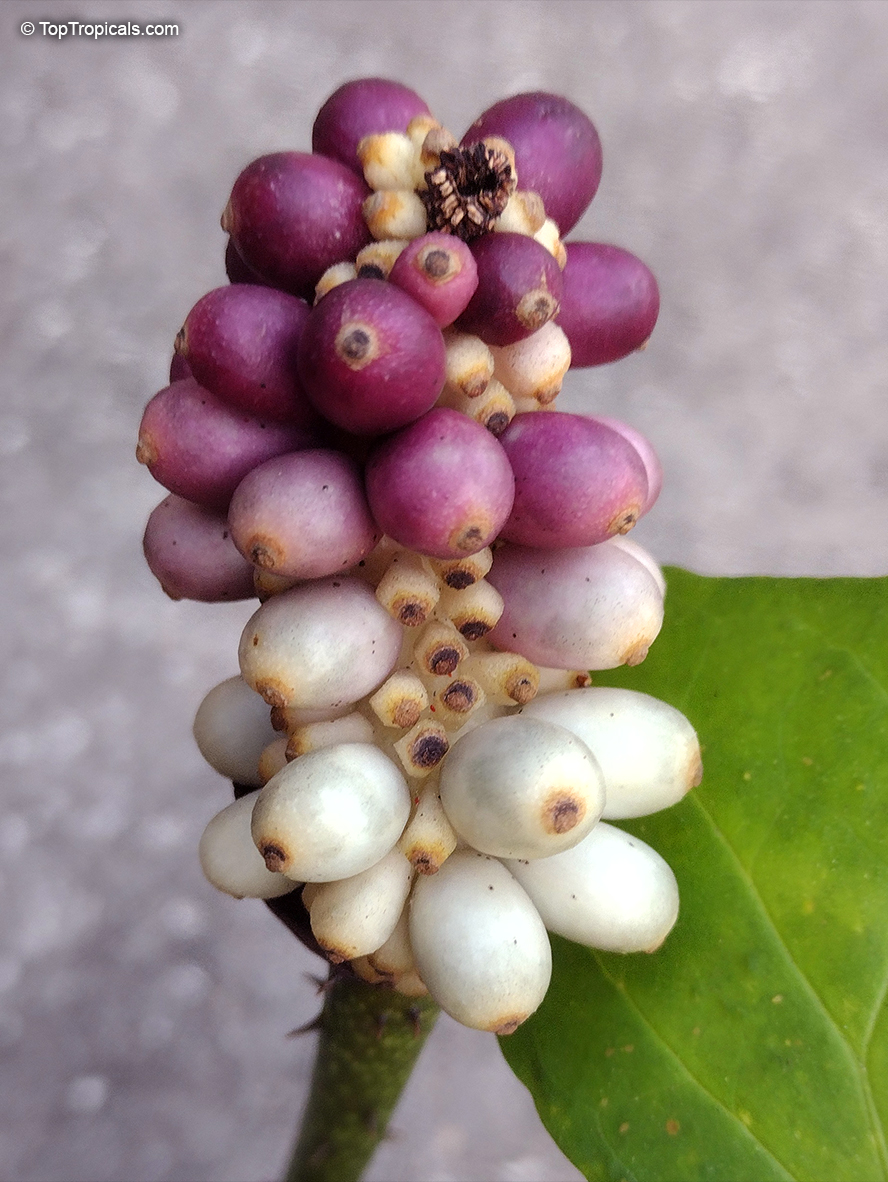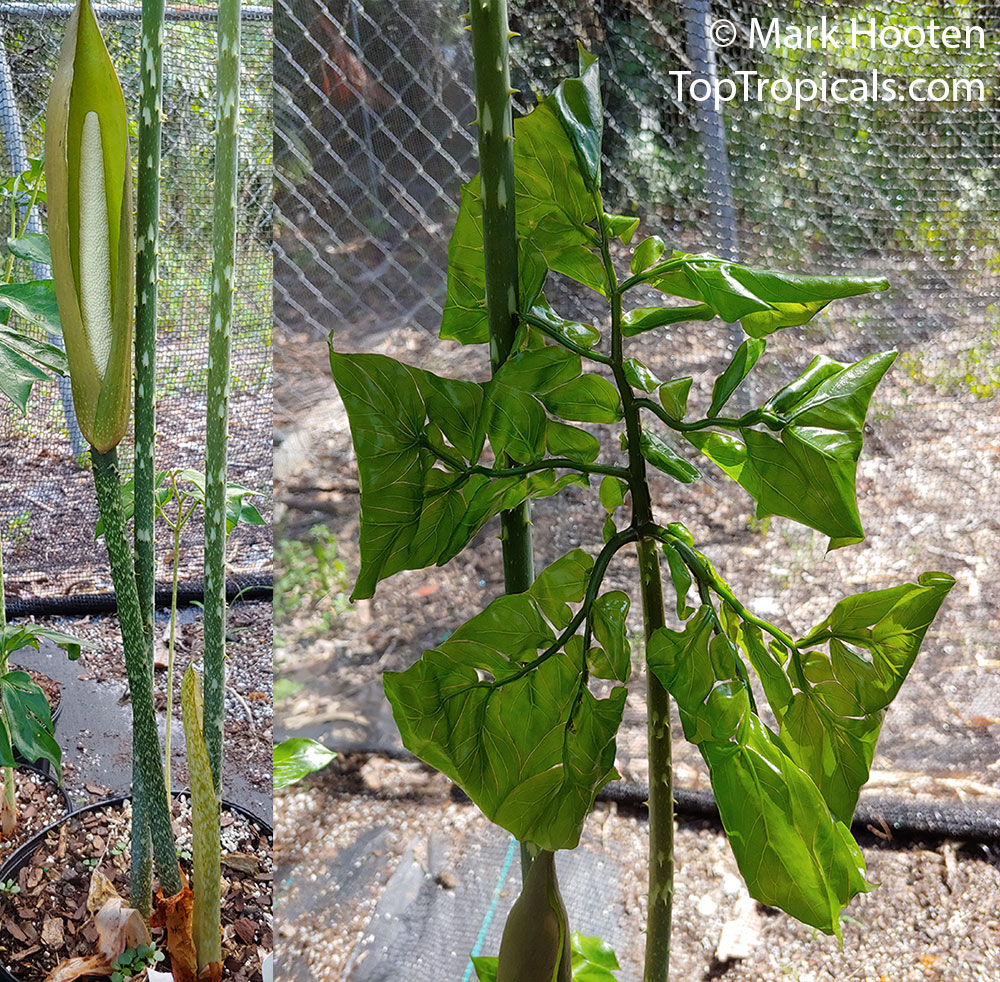Anchomanes difformis (Anchomanes)
Top Tropicals Plant Encyclopedia
Botanical names: Anchomanes difformis, Amorphophallus difformis
Common name: Anchomanes
Family: Araceae
Origin: Tropical Africa






This is the most unusual aroid, distantly related to Amorphophallus. Growing from a horizontal tuber that can measure up to 30" long by 10" across, the plant produces one huge, much-divided leaf with a stout prickly stem.
Originated from the jungles of Benin, along the west coast of Africa. The indigenous people there use the species for a variety of medicinal properties.
These unusual plants grow from a thick, slowly growing tuber, often branching, which creeps horizontally just below the soil surface. The compound leaves are up to 30 inches tall and are supported on slender spotted stems with very rose-like thorns. The fascinating leaves are an enlogated bi-lobed bat shape, often with fenestrations (window holes).
Dormant all winter when they should be kept cooler but not cold, and the soil only occasionally lightly watered until spring. Upon warming weather, they should receive abundant water and bright light, but with no strong sunlight, as this is a jungle species. Often, but not every year, they begin growth with a tall, slender flower spike which may or may not self-pollinate and eventually produce a cluster of white berries which eventually turn voilet-purple when ripe and ready for planting. Germination takes several months, usually in spring of the following year. In Florida, they need only to be planted in the ground, and can then pretty much take care of themselves, although they grow equally well in pots. When in active growth, they want abundant water.
Similar plants: Anchomanes difformis (Anchomanes)
- Amorphophallus atroviridis (Voodoo Lily)
- Amorphophallus bulbifer (Voodoo Lily)
- Amorphophallus glaucophyllus (Voodoo Plant)
- Amorphophallus konjac (Voodoo Lily)
- Amorphophallus paeoniifolius (Elephant Foot Yam)
- Amorphophallus sp. (Voodoo lily)
- Amorphophallus symonianus (Voodoo Lily)
- Amorphophallus titanum (Titan Arum)
These unusual plants grow from a thick, slowly growing tuber, often branching, which creeps horizontally just below the soil surface. Horizontal tuber can measure up to 30" long by 10" across, the plant produces one huge, much-divided leaf with a stout prickly stem. The compound leaves are up to 30 inches tall and are supported on slender spotted stems with very rose-like thorns. The fascinating leaves are an enlogated bi-lobed bat shape, often with fenestrations (window holes).
These are now mature, over 20 years old seedlings of a most unusual aroid, distantly related to Amorphophallus. These seeds were planted in 2000, originated from an ethnobotanist in the jungles of Benin, along the west coast of Africa. The indigenous people there use the species for a variety of medicinal properties.
Recommended Fertilizer: SUNSHINE Robusta - Rapid Growth Booster
